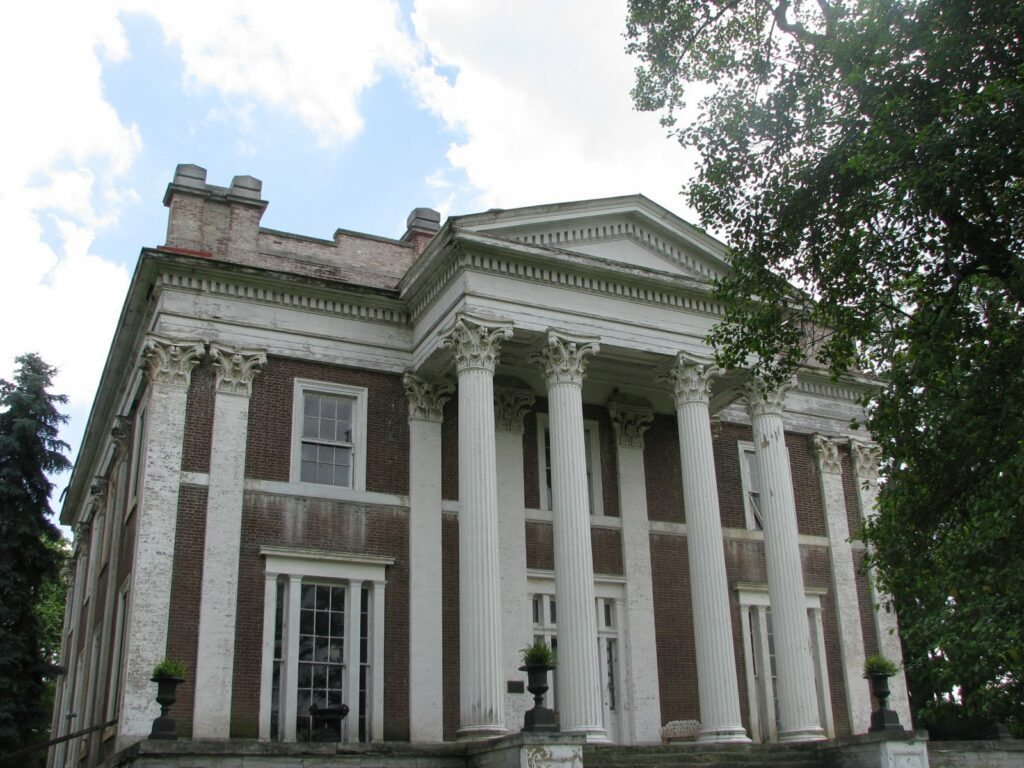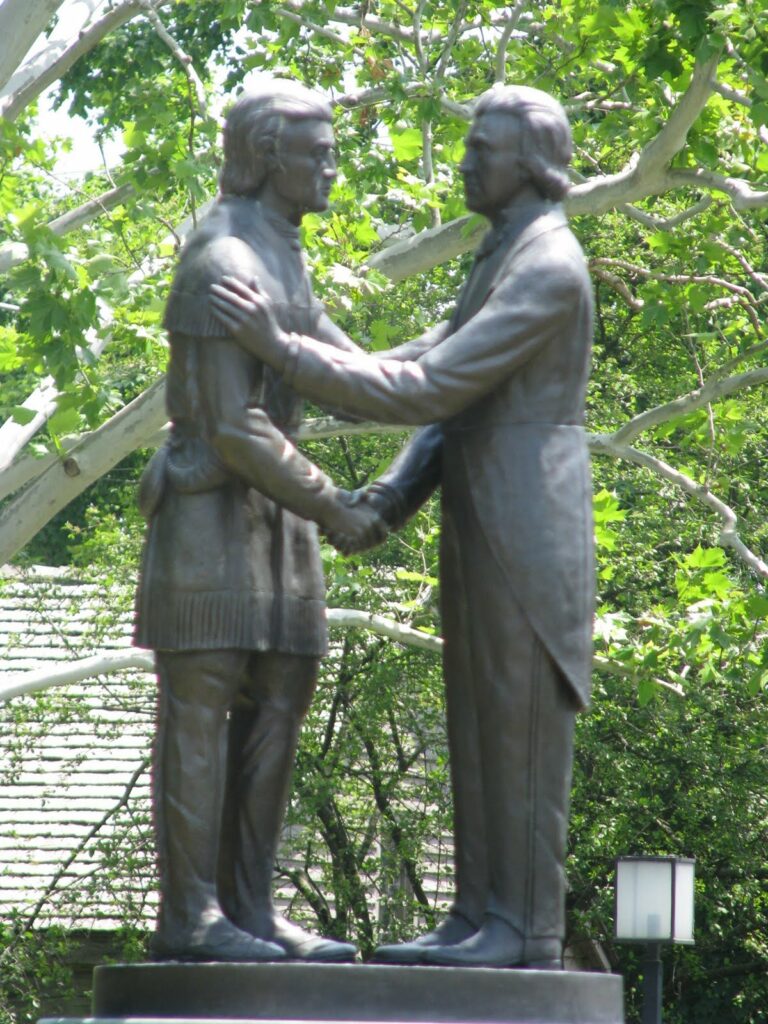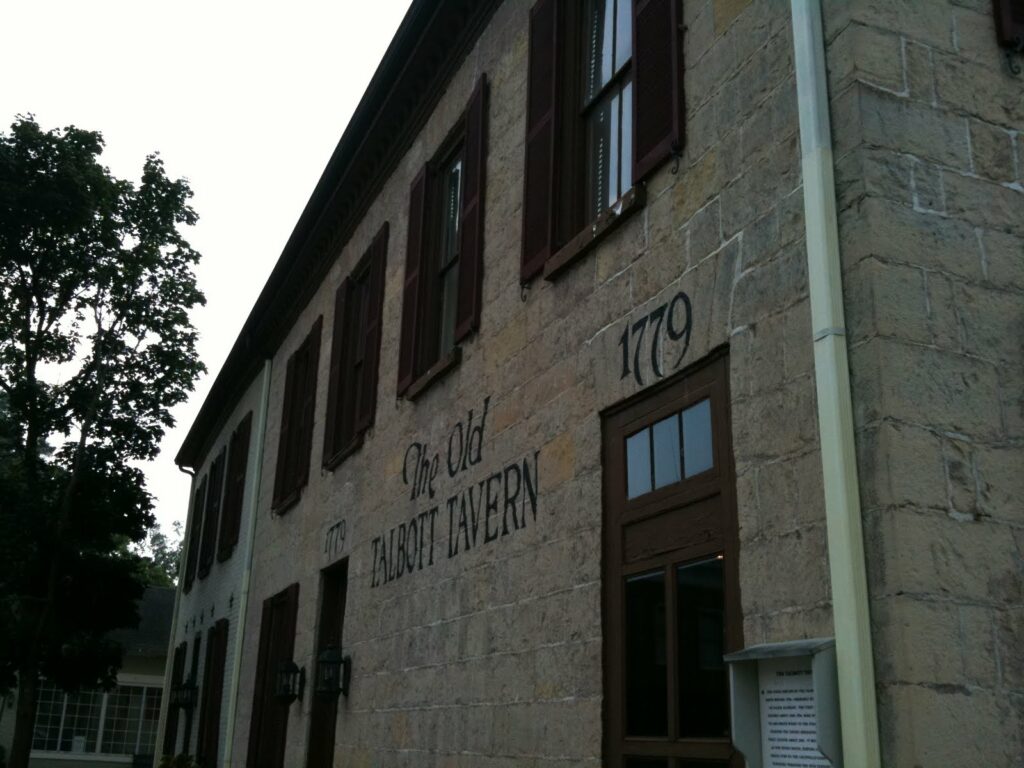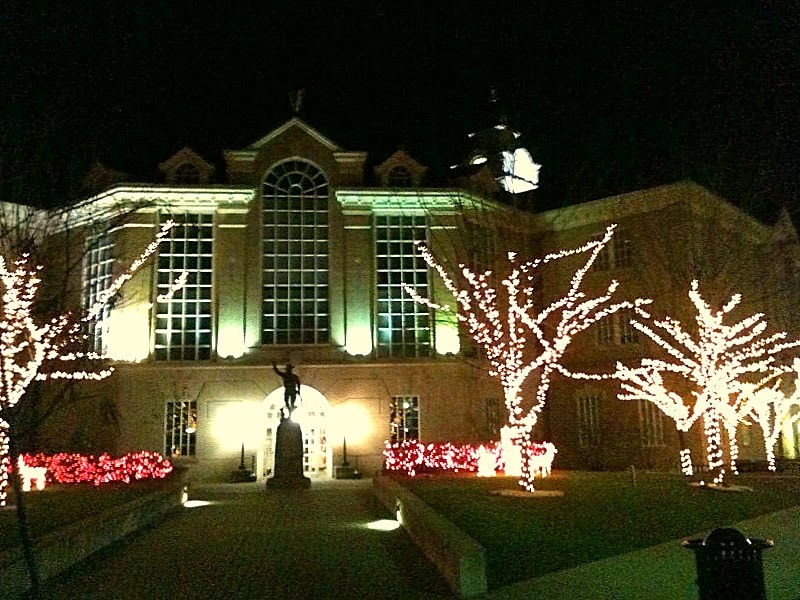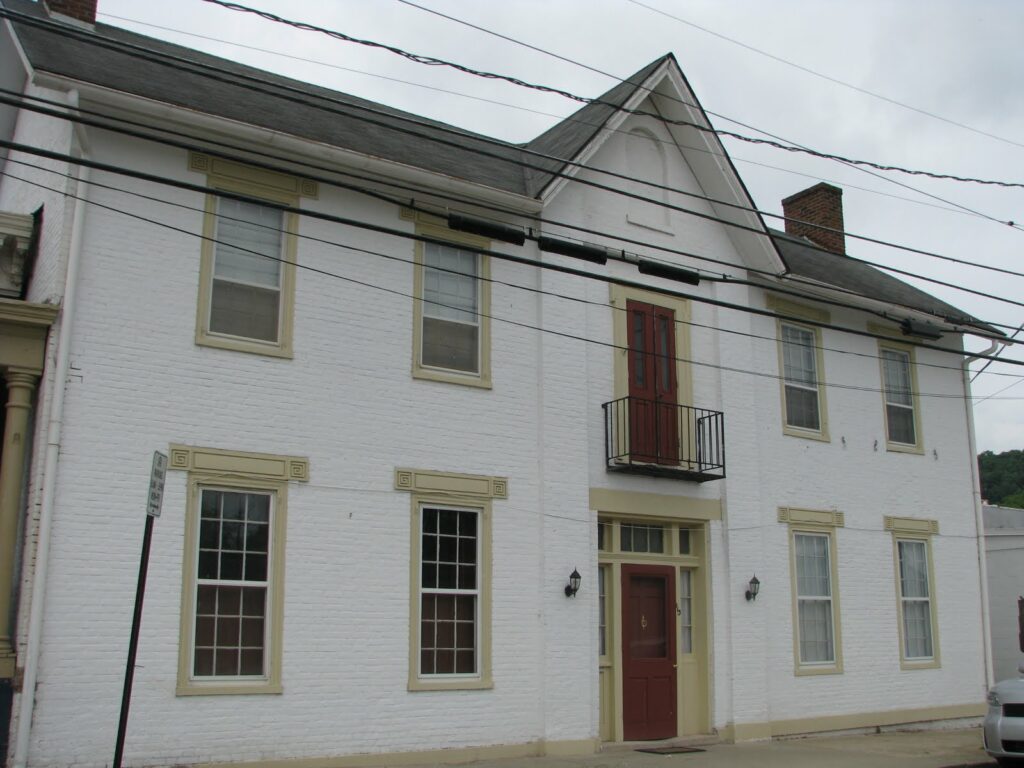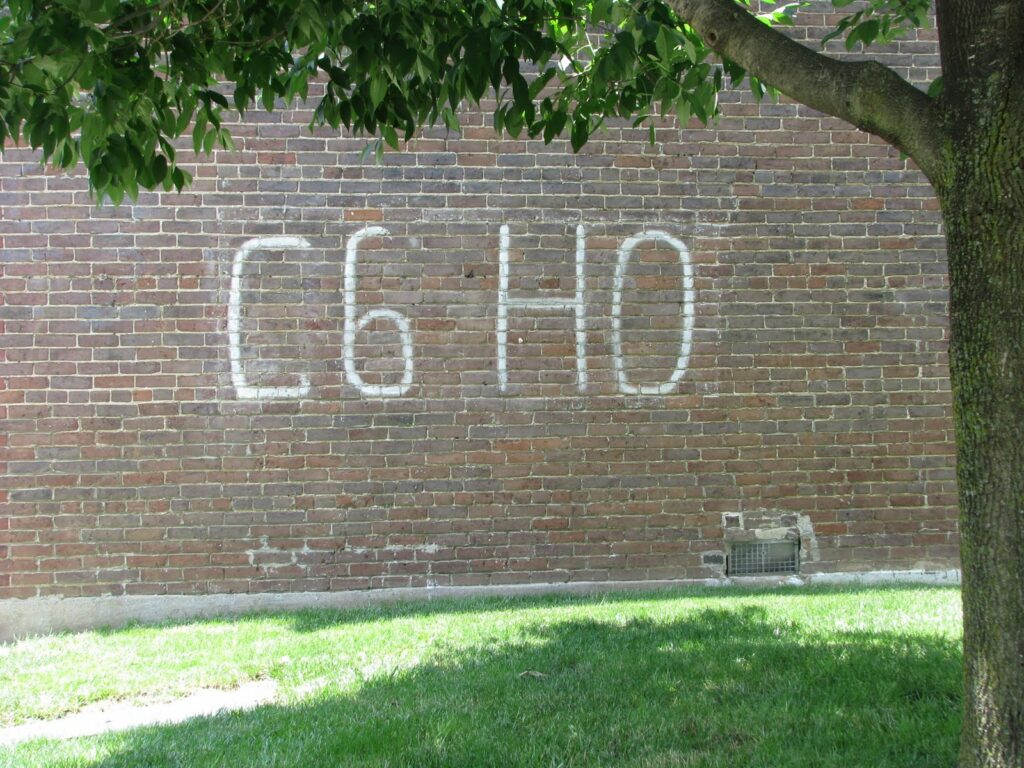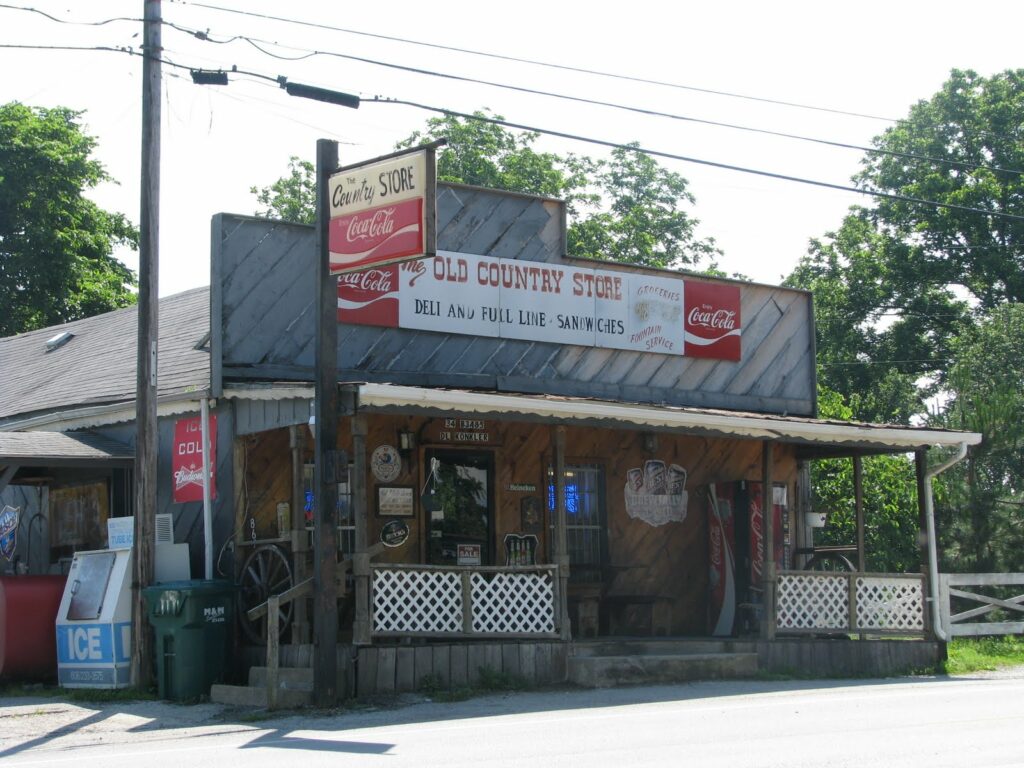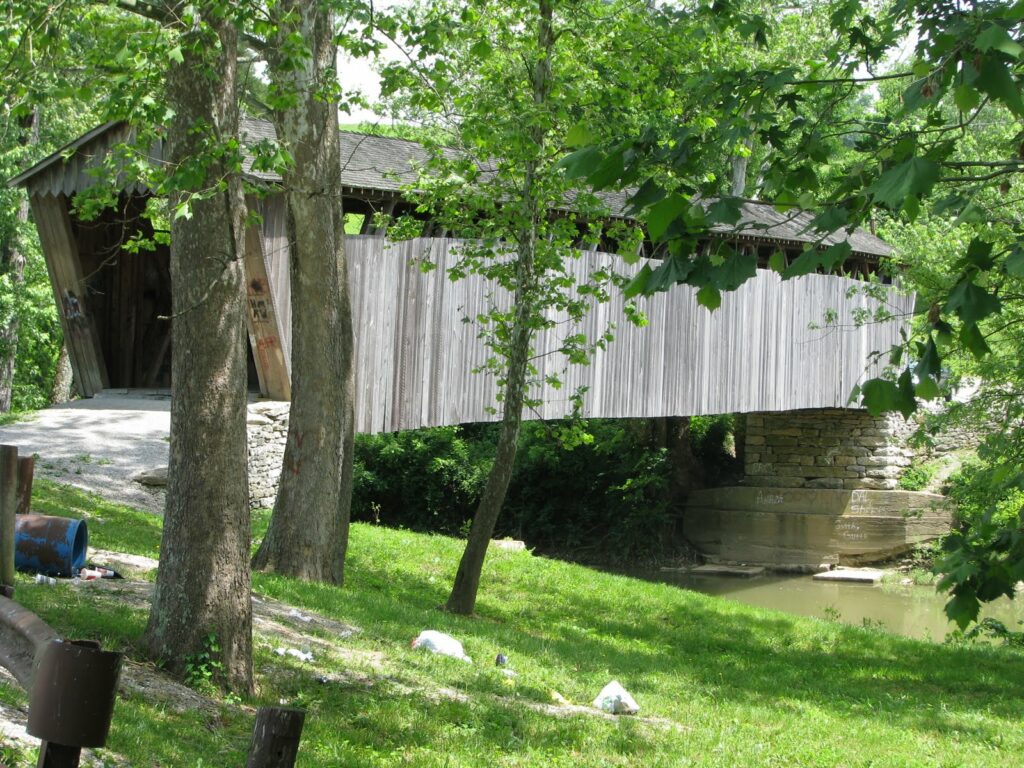
Even though Fleming County is Kentucky’s Covered Bridge Capital, the Commonwealth’s Official Covered Bridge is located in northern Franklin County. The Switzer Covered Bridge spans 120 feet and was built in 1855 by George Hockensmith (it was restored in 1906, 1990 and rebuilt in 1998 the March 1, 1997 flood).
The bridge is of the Howe truss design. It carried traffic until 1954 and was listed on the National Register in 1974. You can see Switzer off KY-1262 between Frankfort and Georgetown; there is a small pull-off on the far side of the bridge.
There is something amazing about any old covered bridge; they are unique and evidence of a bygone era. Here is what the Lexington CVB says:
Four of Kentucky’s [13 remaining] covered bridges are still open to traffic; you can walk through the others. As you rumble across in your car, or pass your hand across the heavy wooden pegs and timbers — rough-hewn to the eye, but worn smooth by the years — you’ll experience the living sensations of another era.
For more on Kentucky’s Covered Bridges, check out the Kentucky Digital Library.

